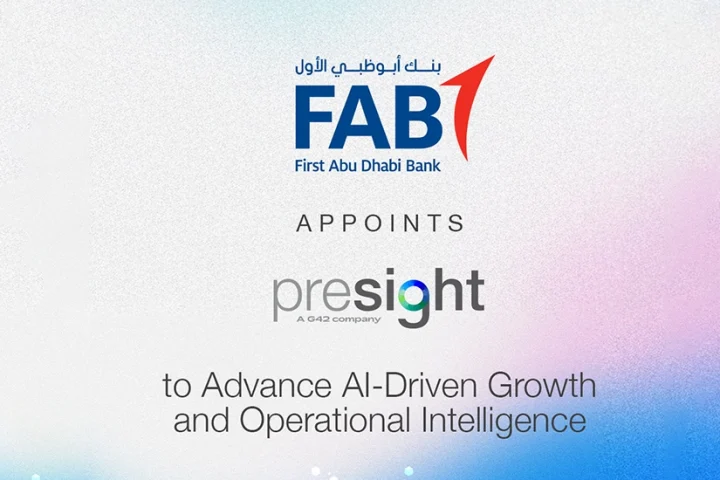With the technology moving from physical servers or data centres to virtual servers or datacentre or even cloud, the application delivery with appropriate security becomes a complex task. But the vendors like Riverbed make it seamless and good experience for the users.
“The Middle Eastern and African markets are beginning to realize the benefits of moving to full-scale virtualization. ”
Taj El-Khayat, Managing Director, Middle East, Turkey, North, West, and Central Africa, Riverbed
What is the ICT market scenario in this region?
According to Gartner, IT spending in the region is expected to reach US$211 billion in 2014, an increase of 8% from 2013. Also, the market for MENA cloud services is estimated to go up by 23% in year 2014 to total US$620 million, up from US$511 million in 2013. In the same token, this also reflected positively on Software as a service (SaaS) is expected to grow by 26.3 percent in 2014 to reach an US$123 million.
All these predictions suggest that the Middle East ICT market has the best growth potential than many other market worldwide in 2014.
What are the technologies evolutions influencing the ICT market in this region?
The Middle Eastern and African markets are beginning to realize the benefits of moving to full-scale virtualization. They are shifting from reacting to changes to being proactive in seeking to embrace mega trends and ultimately towards Software-Defined ‘Everything’ or classified as IT-as-a-Service. Below are some of the factors that are driving the market for these technologies in the MEA region:
Technologies under the umbrella of Software Defined ‘Everything’ are evolving very quickly. Therefore, there is a need to align the pace at which applications are rolled out in each element including either network, storage or others.
In 2014 and onwards, means start to give way to ends, namely Software-Defined Data Center (SDDC). Not long ago, enterprises were becoming familiar with software defined networking and software defined storage, now these are starting to be considered as mere facilitators to achieve an ultimate virtualization of the datacenter and the branch. Also, the conventional relation between the branch and datacenter is being redefined under what is known as the Branch Converged Infrastructure which will enable users to access applications running at a high speed locally in the branch while primary data is stored in the datacenter.
National initiatives, especially in the GCC, are further driving the IT market in the region. For example, the Smart City initiatives are gaining momentum across the Gulf countries namely the United Arab Emirates, the Kingdom of Saudi Arabia and Qatar. The acceleration of these initiatives is creating a hype around the importance of adopting latest technologies when it comes to enterprises.
Mobility is acting as another catalyst in this regard. This is because CIOs are moving to integrate mobility solutions while dealing with security concerns around BYOD.
Riverbed Technology being the leader in the Application Delivery space, how does it position in this region?
Due to our close interaction with our customers and channel partners, we have been fortunate enough to identify the business problems and requirements and develop the right solutions.
There is a high demand on our Application Delivery Controllers (ADC) solution, SteelApp™, which was formerly known as Stingray. It is actually the best product in the market today that is able to provide visibility and control of traffic to and from applications, enabling fast, reliable, and secure application delivery to users anywhere from the cloud or datacenter.
Today, it’s the top virtual application delivery controller (ADC) for scalable, secure, and elastic delivery of enterprise, cloud, and e-commerce applications. We are seeing a lot of interest from the regional market but expect more as businesses are realizing the importance of ADCs in terms of acting as intelligent load balancing and traffic management tools.
How relevant is mobility and cloud market for Riverbed® as the applications does not usually sit on the devices?
With increasing virtualization, cloud initiatives and enterprise mobility, companies will face challenges to maintain a business that is running fast and smoothly. Storage capacity is one of the main challenges facing enterprises today. To help companies embrace IT innovation, including adopting or considering adopting cloud storage, and becoming Transformers by capitalizing on their investments and maximizing profits, Riverbed® has developed the following state-of-the-art cloud support solutions:
To get even closer to the cloud and virtualisation adoption that is happening today, Riverbed invested in the software defined network segment. SteelApp™, our application delivery controller (ADC), is the best example, as we are one of the very few vendors that actually leverage a software-based ADC.
Riverbed® SteelApp™ provides scalable, secure and elastic delivery of applications to users anywhere from the cloud. Far from balancing workloads to cloud services, it controls and optimizes end-user services by differentiating and prioritizing application traffic.
If we consider our heritage WAN optimisation solutions–Riverbed® SteelHead® – this fits best with organizations that have multiple branches close by or very remote. The Steelhead® CloudWAN optimization family is ideal for companies aiming to accelerate the migration of data to the public cloud and improve performance for applications hosted in the public cloud. To support organizations in moving to cloud storage and letting go of most of their hardware infrastructure.
For gateways into cloud storage, we have our Riverbed® SteelStore™ cloud storage appliances that provide companies with the following multiple advantages:
Reduce storage and data protection costs by up to 80%
Achieve instant data recovery while reducing risk
Seamlessly integrate with leading backup and archiving applications
Eliminate the management burden of tape based systems
Slow storage growth by archiving data to the cloud.
What is your go to market strategy?
Currently, we have been working on re-shaping the go-to-market strategy especially since the company has moved from being a mono-product company to a complete platform with the Riverbed Application Performance Platform which focuses mainly on application acceleration. As a result, our channel and distribution strategy is also being re-defined.
By end of fiscal year 2013, the region was clearly capable of absorbing more investments from our side. Also, we are now more committed to transforming the business by not only focusing on investing in sales but also investing in channel people and pre-sales consultants to work with partners and their customers in this highly competitive business environment.
The main aspects of our to-go-market strategy are the below:
Streamlining teamwork so we can get even closer to our customer base
Solidifying our channel organisation so that Riverbed can work closely with partners
Moving from a distribution strategy of having only one distributor to having multiple distributors in the Middle East and Africa region in order to leverage local expertise
Dividing the region into five different clusters namely, 1) Turkey, 2) KSA, 3) North, West, and Central Africa with mainly Nigeria, Morocco and Egypt, 4) North Gulf which includes Dubai, Qatar, Pakistan and Afghanistan, and 5) South Gulf which includes Abu Dhabi, Oman, Kuwait and Yemen.
Employing the best talent and hiring regional sales manager with territory sales managers. We have also introduced a pre-sales consultants team and a support services team to liaise closely with our partners
Focusing our channel strategy to better serve the needs and demands of the different regions
The country modelling is in line with our go-to-market strategy and is very helpful in managing the business as opposed to having our team managing opportunities wherever they may arise.
What is your channel strategy in this region?
As opposed to our initial goal to go with only one Value Added Distributor which is First Video Communication (FVC), we have reshaped our strategy and adapted to the expanding territories that now fall under my responsibility as Managing Director for METNA, while keeping a strong partnership with FVC which will still remain our key VAD in many countries.
From a channel strategy perspective, we can now refer to three markets:
Focus markets where we work with hand-selected system integrators and build our strategic partnerships and business planning.
Here, our strategy remains to go deeper with fewer partners.
Growth markets where we rely on the channel organization and distributors to build the Tier 2 channel until these markets move to the focus market status.
Developing markets where we currently outsource the work to the distributors who will develop our channel on our behalf.
In addition, Riverbed has a very solid channel strategy worldwide supported by a highly enforceable partner program that is aimed to transfer knowledge to partners through trainings and enablement tracks. Since we are a channel-centric organization our revenue streams are generated from our close ties with our partners.
Hence, we are highly concerned about improving their profitability and have implemented the Market Development Fund (MDF) Program so they can request funds for certain marketing activities. Also, the enhanced partner programme rewards partners for their investments with funds, free trainings and promotion across partnership levels.
I have also diversified my channel organisation, which includes a Head of Channels followed by Partner Account Managers under him who will be responsible for managing partner relations and ensuring that we add value to the overall business. In the region, Riverbed is very much focused on investing more in the channel organisation and pre-sales consultants instead of sales.
How does the company engage the customers?
In my region and especially in the Middle East and Africa, we rely primarily on our channel partners to engage with end-customers. Our channel partners contribute up to 90% of our turnover. The rest of the business – mainly with large enterprises and the public sector – is handled directly by the company. Having said that, I would like to reiterate the fact that we consider ourselves as a channel-centric organization and value our partners’ role in driving more success to our business in the coming period.
How do you focus on the marketing activities?
Riverbed is investing considerably in innovations and upgrades to its existing solutions in order to provide its customers with the best solutions on the market. Therefore, Riverbed’s marketing activities are primarily focused on communicating its uniqueness on the market through direct and indirect channels, owned, earned and paid media channels and major industry events.
For example, we put a lot of focus on GITEX which is one of the most important events for us. In addition, I have added to my team a Senior Marketing Manager for METNA who will be responsible for managing the marketing activities and increasing our presence in important events and liaising with our partners to leverage our knowledge and transfer it to end-customers.
Riverbed also invests in quarterly joint marketing activities including advertising, events, seminars, direct mail and email based customer communications in order to maintain a steady flow of opportunities and leads for the partner.
What kind of growth are you expecting this year?
Since Riverbed is a public listed company we are compelled not to provide such predictions related to growth and market share. Such statements would risk affecting the share price. Nonetheless, it is certain that our business is growing at a fast pace and we anticipate this momentum to continue for the rest of the year.
However, it is very interesting to see how the financial results are confirming our vision of the company that is to deliver a Performance Application Platform. If you start comparing Q1 2014 with the last eight quarters you will see that our dependency on Riverbed Steelhead™ is no longer the same as other solutions such as Riverbed® SteelFusion™ and Riverbed® SteelCentral™ are contributing to this overall growth. We are progressing in the right direction towards executing our strategy and expanding to capture the US$11 billion application performance infrastructure market worldwide.




















